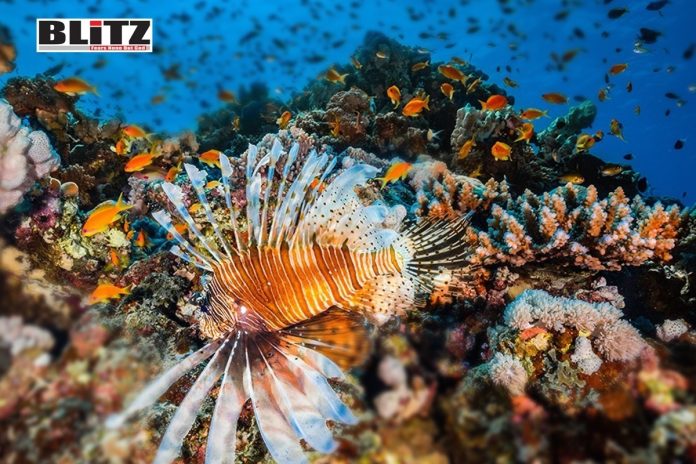Nestled between the continents of Africa and Asia lies the Red Sea, a semi-enclosed basin brimming with life despite its oligotrophic nature-characterized by limited nutrients. Amidst harsh conditions of elevated temperatures, high salinities, and sparse nutrients, this aquatic ecosystem thrives. Within its depths, a vibrant tapestry of biodiversity flourishes, showcasing resilience in the face of adversity. Despite the challenging canvas painted by these environmental factors, the Red Sea stands as a testament to the tenacity of life in extreme conditions.
Below the crystal-clear waters of the Red Sea lies an unseen universe dominated by microorganisms. Invisible to the naked eye, these tiny beings exert immense influence over marine ecosystems, serving as the cornerstone of life in this region. Their presence and activities form the foundation upon which the intricate web of marine life in the Red Sea thrives.
Microorganisms, frequently underestimated, are vital components of this marine ecosystem. Their functions encompass driving nutrient circulation, aiding in oxygen generation, facilitating gas exchange between the sea and atmosphere, bolstering fisheries, and fostering symbiotic connections with larger marine organisms. Through their multifaceted roles, they sustain a delicate equilibrium within the aquatic realm, orchestrating a symphony of life essential for the well-being of the ecosystem.
At the heart of this intricate web lies the microbial food web-a natural cycle where energy and matter are exchanged through trophic interactions among microorganisms. Cyanobacteria, minute photosynthetic bacteria measuring only 0.2 to 0.2 micrometers, form the bedrock of this ecosystem. Like miniature powerhouses, they harness sunlight to produce oxygen and organic matter through photosynthesis.
Heterotrophic bacteria, ranging from 0.2 to 0.5 micrometers, thrive on the organic bounty provided by cyanobacteria, perpetuating the cycle of life. Zooplankton, slightly larger at 2 to 20 micrometers, play their part by predating on bacteria, thus completing the intricate dance of energy transfer within the microbial realm.
Despite their minuscule size (0.02 to 0.2 micrometers), viruses reign supreme as the most abundant biological entities on Earth. Often associated with infection and mortality, they play a crucial role in sustaining the health and balance of marine ecosystems. Their presence contributes to the regulation of population dynamics and nutrient cycling, highlighting their significance beyond their notorious reputation.
Within the depths of the Red Sea, microbial communities, comprising both living organisms and viral entities, harmoniously collaborate to uphold the tapestry of life. Together, their unified endeavors serve as the driving force behind biodiversity, safeguarding the existence of marine life, from the grand to the infinitesimal. Their collective actions weave an intricate web of interconnectedness, sustaining the azure depths with unparalleled resilience and vitality.
On World Water Day, it is crucial to illuminate the unsung heroes of our oceans: the microbes. Beyond the awe-inspiring spectacles of the sea, lies a realm brimming with life, ripe for exploration and comprehension. These microscopic marvels, often overlooked, hold the key to unlocking the mysteries of our aquatic ecosystems, underscoring the interconnectedness of all life forms within the watery depths.
In our quest for knowledge, we owe a debt of gratitude to organizations like the National Center for Wildlife. Their tireless efforts in unraveling the mysteries of marine habitats, such as blue holes, have enriched our understanding of the Red Sea’s intricate ecosystems.
The National Center for Wildlife’s unwavering commitment to conserving marine and coastal environments resonates harmoniously with visionary initiatives such as the Saudi Green Initiative and Vision 2030. Their comprehensive approach spans from the protection of vital coral reefs to the preservation of crucial mangroves and seagrass beds. Through their dedicated efforts, they pave the way for a sustainable future, safeguarding these precious ecosystems for the prosperity of generations yet to come.
As we contemplate the vastness of the Red Sea, let us not forget the unsung heroes dwelling beneath its surface. Within their imperceptible domain lies the gateway to unraveling the mysteries of our oceans and preserving the delicate equilibrium of marine life for future generations. Their silent presence underscores the interconnectedness of all life forms within this aquatic realm, urging us to cherish and protect it.




